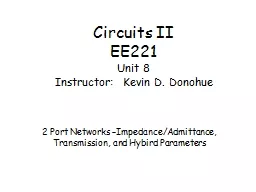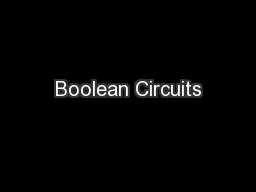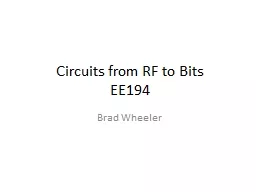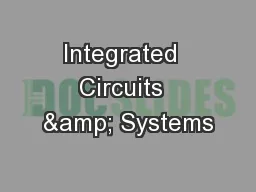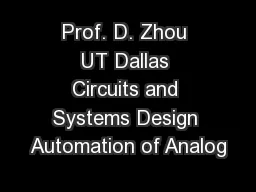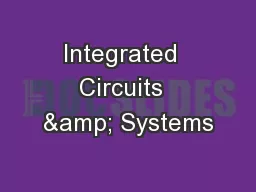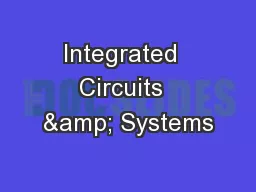PPT-Circuits II EE221 Unit 8
Author : kittie-lecroy | Published Date : 2019-03-15
Instructor Kevin D Donohue 2 Port Networks ImpedanceAdmittance Transmission and Hybird Parameters 2Port Circuits Network parameters characterize linear circuits
Presentation Embed Code
Download Presentation
Download Presentation The PPT/PDF document "Circuits II EE221 Unit 8" is the property of its rightful owner. Permission is granted to download and print the materials on this website for personal, non-commercial use only, and to display it on your personal computer provided you do not modify the materials and that you retain all copyright notices contained in the materials. By downloading content from our website, you accept the terms of this agreement.
Circuits II EE221 Unit 8: Transcript
Download Rules Of Document
"Circuits II EE221 Unit 8"The content belongs to its owner. You may download and print it for personal use, without modification, and keep all copyright notices. By downloading, you agree to these terms.
Related Documents

